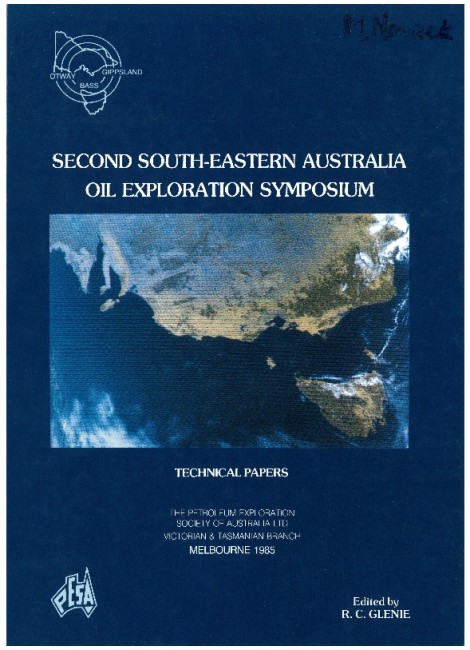Publication Name: Second South-Eastern Australia Oil Exploration Symposium - Technical Papers
Authors: B.A. Sissons and R.D. Walsh
Date Published: December 1986
Number of Pages: 19
Reference Type: Book Section
Abstract:
Main hydrocarbon sources and reservoirs within the Taranaki Basin are Upper Cretaceous through Lower Tertiary fluvial to paralic sediments deposited in and around fault-angle depressions associated with the breakaway of New Zealand from eastern Australia. Drape structures over fault bounded basement highs are primary exploration targets. However, in the southern part of the Taranaki Basin such primary paleo-structures have been overshadowed by spectacular 'roll-overs' developed by basin eversion during the Pliocene.Within the offshore Kahurangi Trough, in the southern part of the basin between the Maui field and the South Island, two wells (Cook-1 and Fresne-l) have proved some 2000 m of Cretaceous section lying at shallow depth in such everted anticlines. Whilst the section appears flushed, the wells demonstrate that the trough contains good mature source intervals. Accordingly, a seismic survey was shot in 1984 over the marginal high immediately west of the trough to seek 'paleo structures' optimally placed for sourcing from the trough at an early stage. Excellent quality data from this and earlier surveys allows precise time mapping of the area. A marked lateral velocity gradient, created by a northwestwards prograding wedge of Miocene-Recent sediments produces marked differences between time and depth maps on deeper horizons. The seismic with well control allows depth mapping of the Cobden Limestone (a regional Oligocene seismic marker) and subsequent accurate depth estimation to the Eocene Kapuni level, using the appropriate isopach with velocity control from the nearby Kiwa-1 well.
The lateral velocity gradient enhances depth closure in the critical southerly direction. Thus, while only two small closures appear on the time map, the depth map shows three sizeable structures, the largest of which,
Kahurangi South, covers an area of some 100 km2 with a likely recoverable reserve estimate in excess of 200
million barrels. A continuous velocity analysis along the critical dip line independently confirms that closure exists on this structure at all levels beneath the Oligocene. The Kahurangi structures are thus good targets for further drilling in offshore Taranaki.


